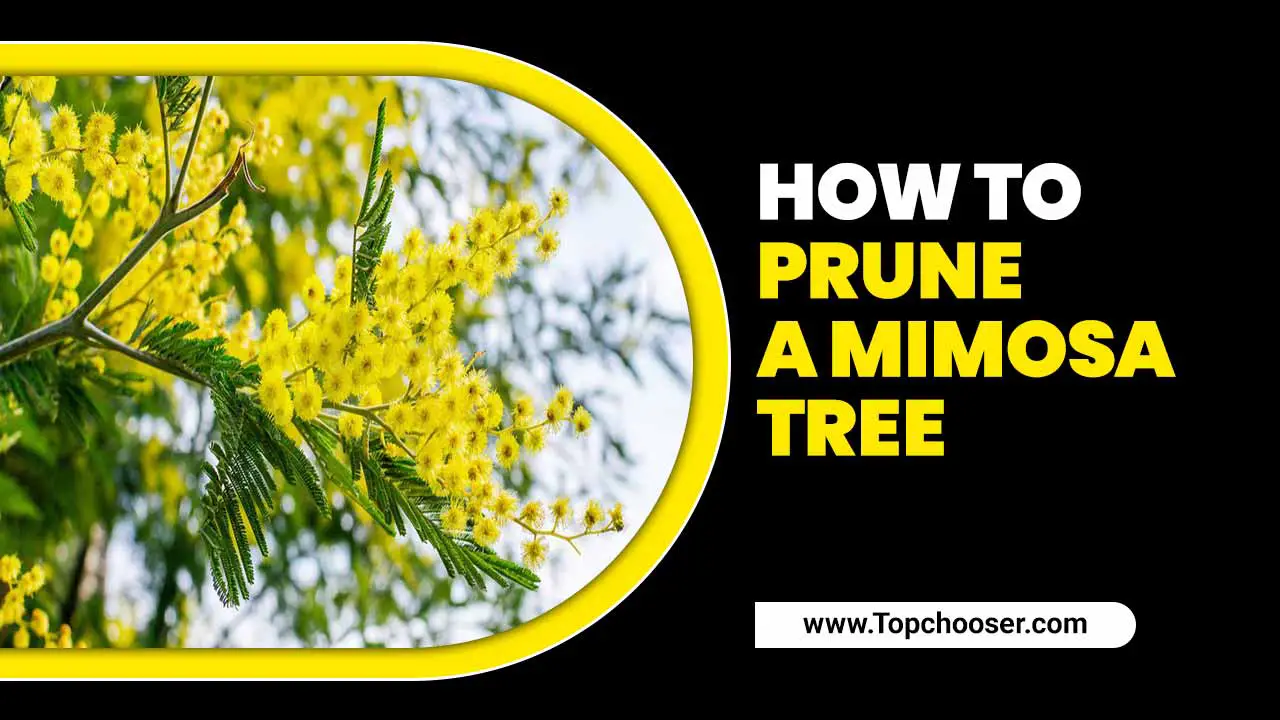Wisteria is a beautiful, fast-growing vine that can add a touch of elegance to any garden or landscape. Its cascading blooms in shades of purple, blue, and white make a stunning display during the spring and summer months.
However, without proper maintenance, this vigorous climber can quickly become overgrown and unkempt, causing damage to structures and other plants. As such, every Wisteria owner needs to know how to properly prune and maintain this plant to preserve its health and beauty.
We will discuss the importance of prune overgrown wisteria and provide a step-by-step guide on how to do it effectively. We will also highlight some common mistakes to avoid and offer tips on how to care for your wisteria throughout the year.

Tools Needed For Pruning Wisteria
Knowing the tools needed for pruning wisteria is essential for maintaining the health and beauty of this popular flowering vine. Wisteria is a vigorous plant that requires regular pruning to control its growth and encourage optimal blooming. By understanding the importance of using the right tools, gardeners can ensure that the pruning process is efficient and effective.
- Pruning shears or secateurs
- Loppers
- Pruning saw
- Gloves
- Safety goggles
- Ladder or step stool
- Garden twine or ties
- Disinfectant or rubbing alcohol
- Garden waste bags or bins
How To Prune Overgrown Wisteria
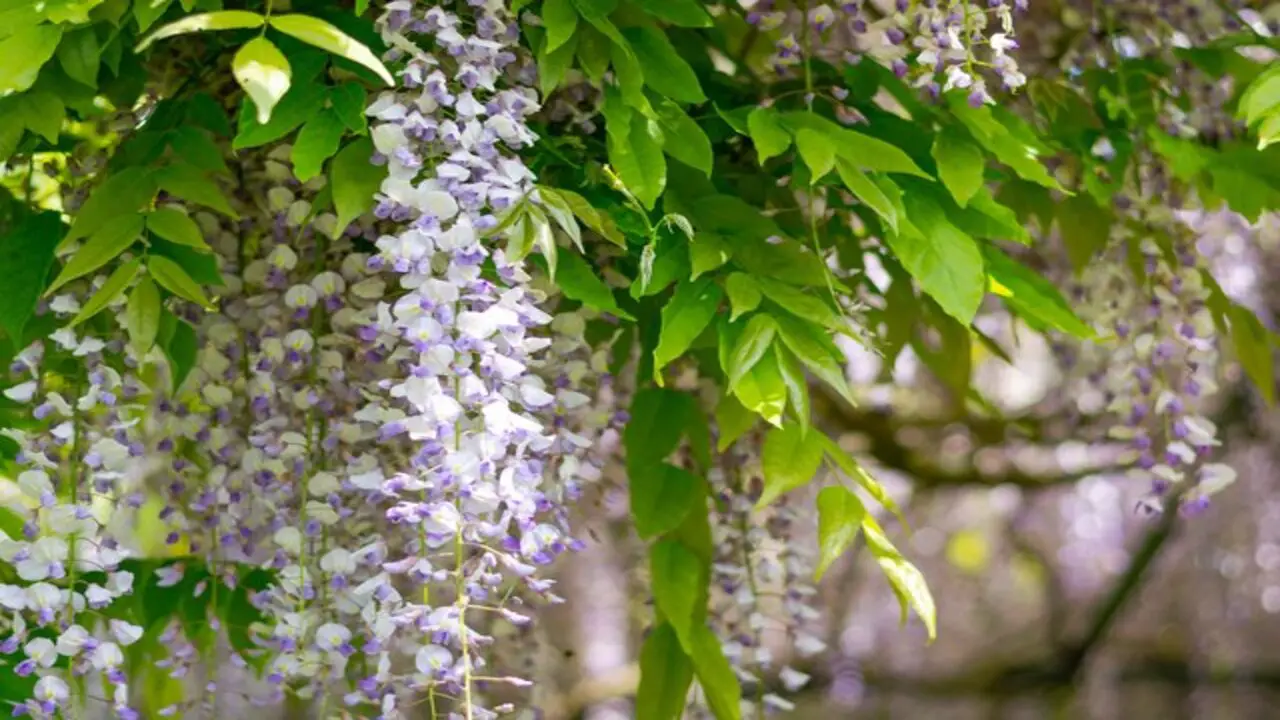
Knowing how to prune overgrown wisteria is of utmost importance. Wisteria, with its cascading clusters of fragrant flowers, is a popular choice for garden enthusiasts. However, without proper pruning, this vigorous vine can quickly become unruly and overpowering.
Understanding the art of pruning is essential for several reasons. First and foremost, pruning helps to control the size and shape of the wisteria plant. An overgrown wisteria can easily take over a garden, smothering other plants and structures in its path. By pruning, one can direct the growth of the vine, keeping it within desired boundaries and preventing it from becoming a nuisance. Below step-by-step guide to prune:
1.Start By Removing Any Dead Or Damaged Branches
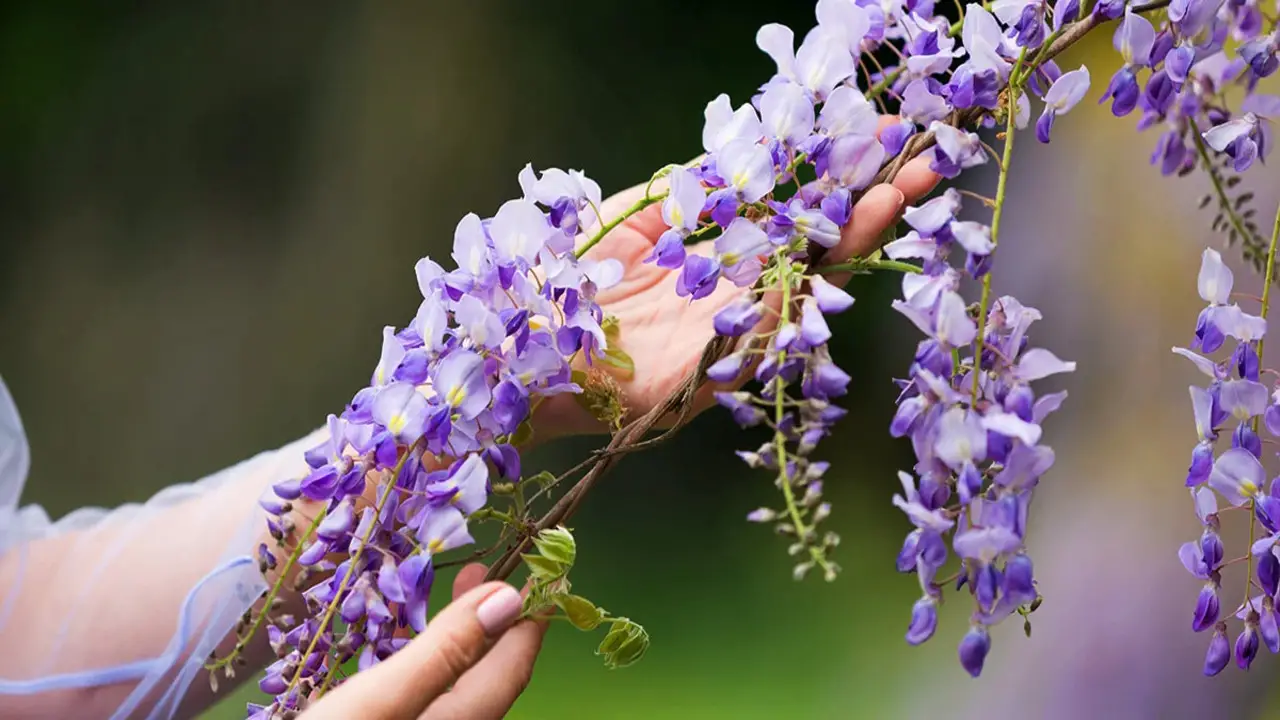
Pruning an overgrown wisteria is a vital aspect of its maintenance and care. With its vigorous growth habit, wisteria can quickly become unruly and dense if left unchecked. When approaching the pruning process, the first step is to identify weak growth and remove any dead or damaged branches. These branches not only detract from the overall aesthetics of the wisteria but can also create an entry point for pests and diseases.
Carefully inspect the plant, paying close attention to areas where the branches appear brown, brittle, or lifeless. Using clean, sharp pruning shears, make clean cuts just above a healthy bud or lateral branch to encourage new growth. By removing the dead or damaged branches, you not only improve the appearance of the wisteria but also enhance its overall health and longevity.
2.Identify The Main Framework Branches
To effectively manage and maintain a garden, it is essential to identify the main framework branches and take necessary actions to prune overgrown wisteria. Pruning is a fundamental practice that promotes the health and aesthetics of plants, ensuring their long-term vitality.
When dealing with wisteria, a vigorous and fast-growing vine, identifying the main framework branches becomes crucial. These branches form the basic structure of the plant, providing support for lateral growth and the beautiful cascading blooms. By carefully assessing the plant’s growth pattern, one can determine which branches contribute to the overall framework and which ones have become overgrown or tangled.
3.Cut Back Any Long, Trailing Shoots To About 6 Inches
Cut back any long, trailing shoots to about 6 inches. Pruning overgrown wisteria not only helps maintain its aesthetic appeal but also promotes better flowering and helps to make your garden dreams and overall plant vigour.
To begin the pruning process, carefully assess the wisteria’s growth pattern and identify the long, trailing shoots that have exceeded their desired length. Using sharp pruning shears, make clean cuts just above a bud or side branch. This encourages new growth and prevents unsightly bare stems. It is important to make precise cuts to avoid damaging the main structure of the plant.
4.Remove Any Suckers
To ensure optimal growth and longevity, it is crucial to remove any suckers and prune the plant as needed. To begin, it is important to identify the suckers, which are new shoots that emerge from the base of the wisteria.
These suckers often divert valuable nutrients and energy away from the main mature plants, hindering their growth and potentially creating a tangled mess of branches. Carefully inspect the base of the plant and remove any suckers by cutting them as close to the main stem as possible.
5.Consider Using Support Structures
One such plant that often benefits from the use of support structures is the wisteria. Known for its beautiful blooms and vigorous growth, wisteria can quickly become overgrown and unruly if left unchecked. To prevent this, it is essential to actually run overgrown wisteria regularly.
By removing excessive growth, dead or damaged branches, and tangled vines, the plant can redirect its energy towards producing new growth and vibrant flowers. However, pruning wisteria can be a challenging task due to its twining nature and rapid growth rate. This is where support structures come into play.
Techniques For Pruning Wisteria
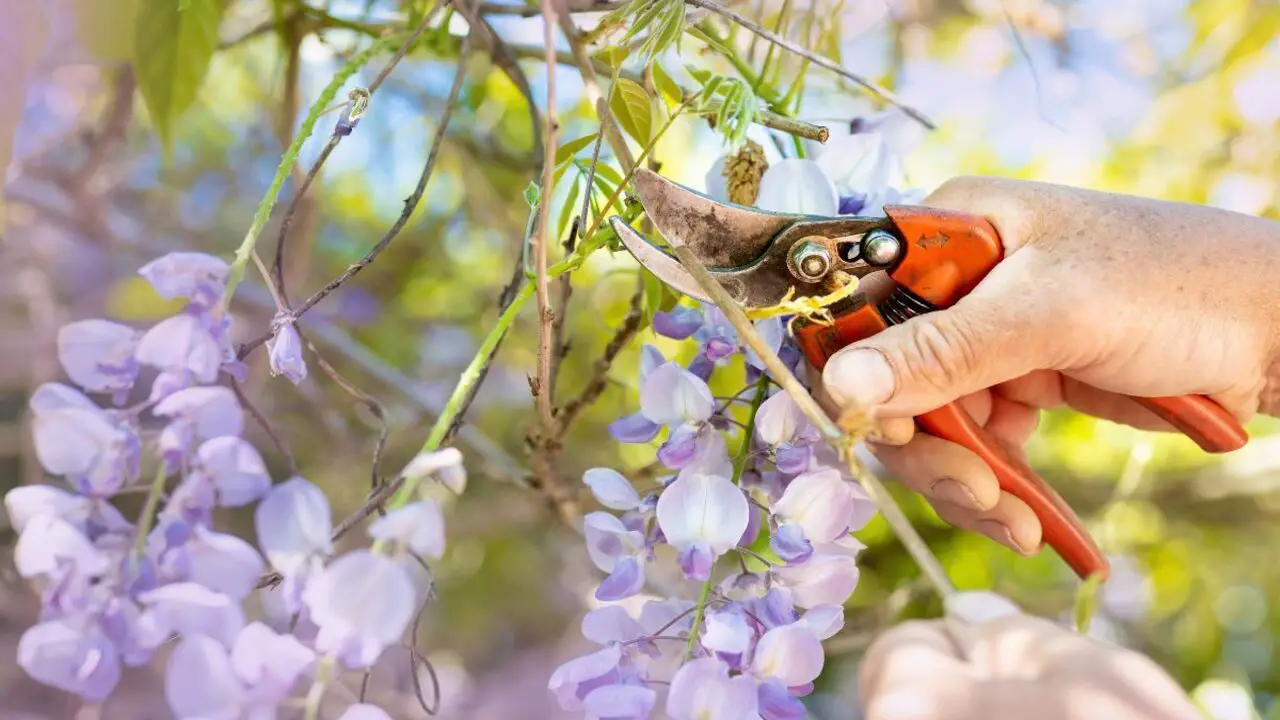
Several techniques can be used to prune wisteria effectively. One method is to prune back the long shoots that grow from the main stems in mid-summer pruning, leaving only a few leaves on each shoot. This will encourage the plant to produce more flowers and prevent it from becoming too unruly.
Another technique is to prune in late winter or early Winter pruning, cutting back any lateral branches that have grown beyond their desired length. This will help control the plant’s size and promote healthy growth. It’s important to use sharp pruning tools and make clean cuts to minimize damage to the plant. Using these techniques, you can keep your wisteria looking its best for years.
How To “Train” Wisteria Through Pruning?
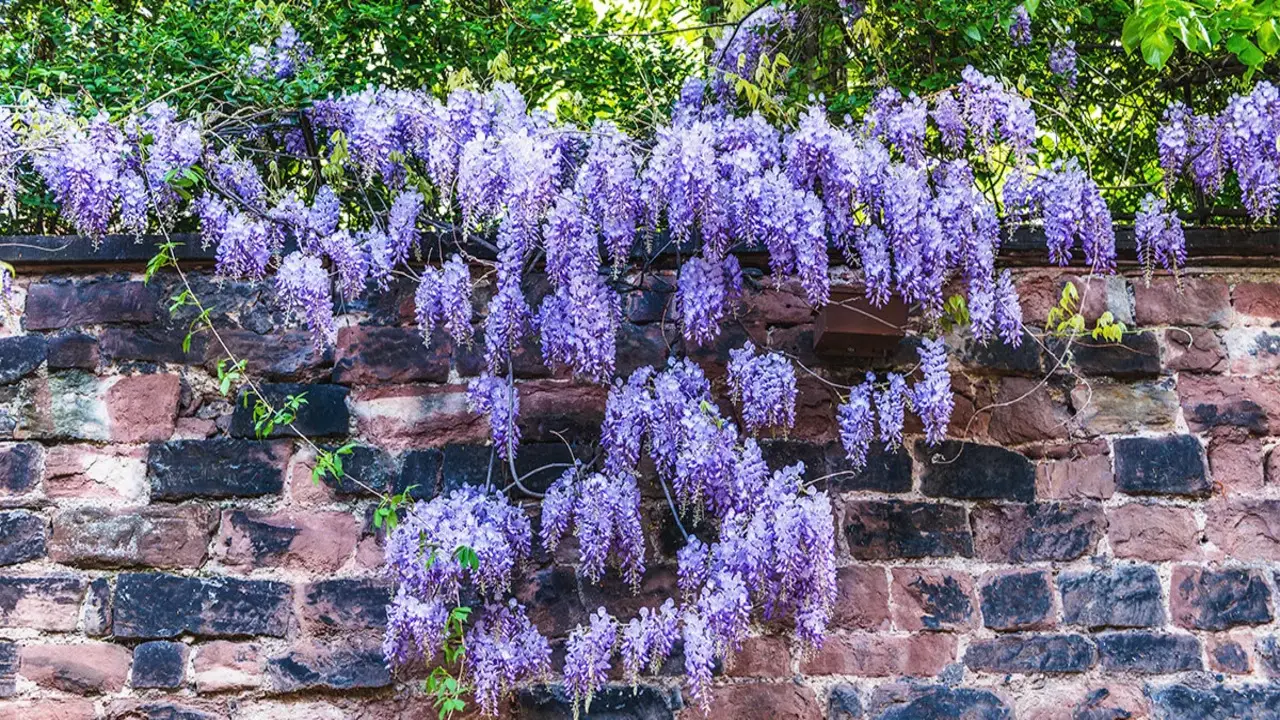
Pruning wisteria can be daunting, but with a little preparation and training, it can be a relatively easy process. First and foremost, you’ll need to understand the basics of wisteria growth. Wisteria vines grow upward and tend to sprawl out in all directions, so you’ll need to prune them to grow healthily regularly.
- Start by selecting a strong and healthy wisteria plant for training.
- Begin pruning in the first year after planting to establish a strong framework.
- Identify the main stem or trunk and select 34 strong lateral branches to serve as the main framework.
- Remove any competing or weak branches to ensure a balanced structure.
- Prune back the lateral branches to promote branching and stimulate more growth.
- Use pruning shears to cut back the main stem or trunk to a desired height.
- Repeat pruning annually during the dormant season to maintain the desired shape and size.
- Remove any dead, diseased, or crossing branches to promote air circulation and prevent diseases.
- Train the lateral branches to grow in a desired direction by attaching them to a trellis or support structure.
- Regularly monitor the growth and adjust the training as needed to maintain the desired form.
Common Mistakes To Avoid When Pruning Wisteria
Knowing common mistakes to avoid when pruning wisteria is essential for maintaining the health and beauty of this stunning flowering vine. Pruning wisteria is a delicate process that requires precision and knowledge, as improper pruning techniques can lead to stunted growth, reduced blooming, and even damage to the plant. Therefore, understanding why it is important to avoid these mistakes is crucial for any gardener or landscaper.
- Pruning At The Wrong Time Of Year: Avoid pruning wisteria in late summer or early fall, as this can stimulate new growth that may not harden off in time for winter.
- Overprinting: Be careful not to prune too much off the wisteria, as this can result in a lack of flowering in the following season.
- Improper Pruning Technique: Use proper pruning techniques, such as making clean cuts at a 45-degree angle and removing dead or diseased wood.
- Neglecting To Train The Vine: Wisteria requires proper training and support to grow in the desired shape. Neglecting to do so can result in a tangled mess and difficulty in future pruning.
- Failing To Remove Suckers: Wisteria tends to produce suckers or shoots from the base of the plant. These should be promptly removed to prevent the plant from becoming unruly.
- Pruning Too Lightly: A common mistake is not pruning wisteria enough. Prune back long shoots and excess growth to maintain a manageable size and promote better flowering.
- Pruning Only Once A Year: Wisteria benefits from both summer and winter pruning. Regular pruning helps maintain the plant’s shape and encourages more flowers.
- Disregarding Safety Precautions: Always wear gloves and protective gear when pruning wisteria, as the plant’s vines can be sharp and irritate the skin.
Tips For Maintaining Healthy And Blooming Wisteria After Pruning
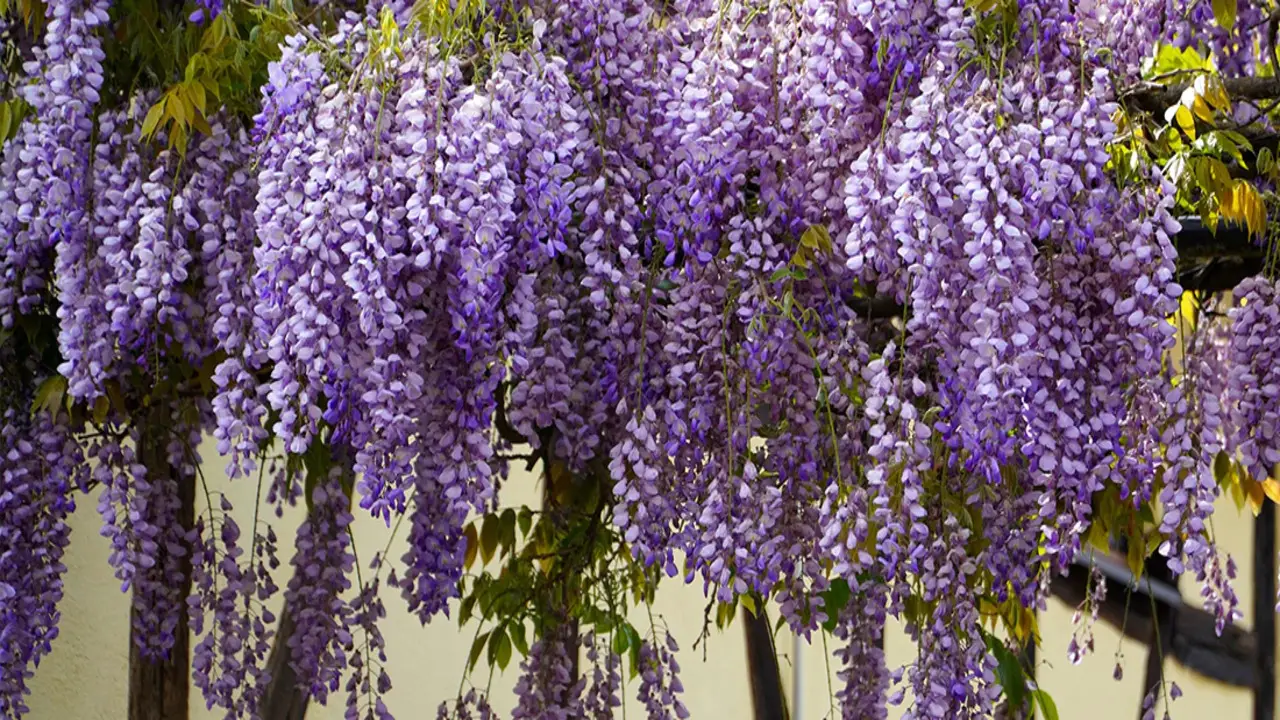
They know the tips for maintaining a healthy and blooming wisteria after pruning, which is essential for any gardener or homeowner who wants to enjoy the beauty of this stunning flowering vine. Wisteria plants require regular pruning to keep them in optimal condition and encourage abundant blooms. However, improper pruning techniques or neglecting post-pruning care can lead to stunted growth and limited flowering.
- Provide Adequate Sunlight: Make sure your wisteria receives at least 68 hours of direct sunlight daily to promote healthy growth and abundant blooms.
- Regularly Water: Keep the soil consistently moist, especially during the growing season. However, avoid overwatering as excessive moisture can lead to root rot.
- Fertilize Appropriately: Use a balanced fertilizer specifically formulated for flowering plants to provide essential nutrients to support healthy growth and blooming. Follow the instructions on the packaging for proper application.
- Prune Properly: After pruning, remove any dead or damaged branches to maintain the overall health of the plant. Additionally, prune back long shoots and side shoots to encourage new growth and more flowers.
- Train And Support: Secure the main stem and branches to a sturdy structure, such as a trellis or pergola, to support the weight of the vine. Regularly check and adjust the supports as the wisteria grows.
- Monitor For Pests And Diseases: Keep an eye out for common pests and diseases, such as aphids or powdery mildew. Treat any issues promptly to prevent further damage to the plant.
- Mulch The Base: Apply a layer of organic mulch around the base of the wisteria to help conserve moisture, suppress weeds, and regulate soil temperature.
- Regularly Inspect And Maintain: Regularly inspect your wisteria for any signs of stress, such as yellowing leaves or lack of growth. Take appropriate action, such as adjusting the watering.
Considerations When Pruning Wisteria
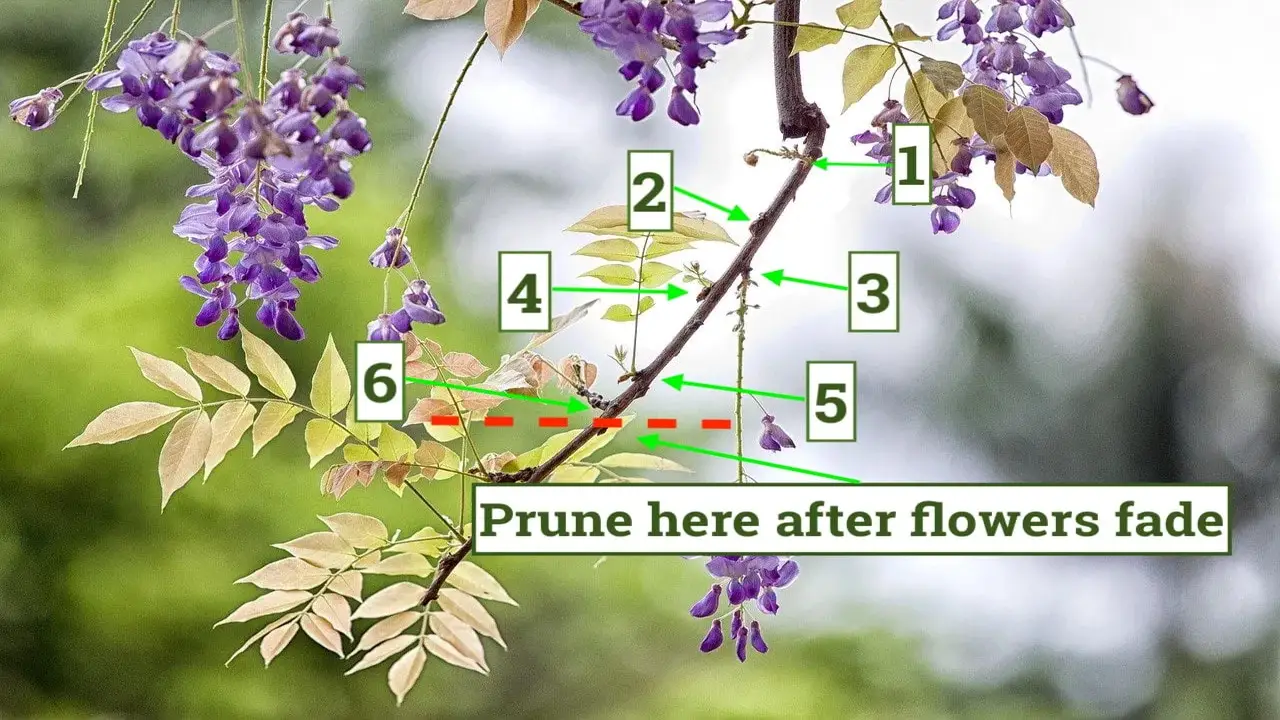
If you’re looking for ways to prune-overgrown wisteria, there are a few things that you should keep in mind. First, it’s important to know that wisteria needs a lot of sunlight and fresh air to grow properly. If you can’t provide either of these things, your wisteria will likely be stunted and unhealthy.
- Choose The Right Time To Prune: Prune wisteria during the dormant season, preferably in late winter or early spring, before new growth starts.
- Understand The Growth Habit: Wisteria can be vigorous climbers, so it is important to understand the growth habit of the specific variety you have. This will help determine how much to prune and where to make the cuts.
- Maintain The Desired Shape: Pruning helps control the shape and size of the wisteria. Regular pruning will help maintain a desired form and prevent the plant from becoming too unruly.
- Remove Dead Or Damaged Wood: Pruning is an opportunity to remove any dead or damaged wood from the wisteria plant. This helps improve overall health and appearance.
- Encourage Flowering: Pruning can stimulate flower production in wisteria. To encourage more blooms, selectively prune back some of the long shoots to encourage the growth of shorter, flowering spurs.
- Use Proper Pruning Techniques: Make clean cuts just above a bud or lateral branch to encourage new growth. Avoid cutting back too much at once, as this can weaken the plant.
- Consider The Structure Or Support: If wisteria is growing on a structure or support, consider the impact of pruning on its stability. It may be necessary to prune gradually over time to avoid damaging the support structure.
- Safety Precautions: When pruning wisteria, take necessary safety precautions, such as wearing gloves and eye protection, as the plant can have sharp thorns and sap
Conclusion
Prune overgrown wisteria can seem like a daunting task, but with the pruning guide, the right techniques and tools, it can be easily managed. Remember to always start with a plan and work systematically to avoid damaging the plant.
Regular pruning not only keeps the plant healthy but also promotes better flowering and overall aesthetics. With a little time and effort, you can transform your overgrown wisteria into a beautiful and manageable addition to your garden. As always, if you feel overwhelmed or unsure, don’t hesitate to seek the help of a professional for a successful pruning experience.
Frequently Asked Questions
[rank_math_rich_snippet id=”s-98f42441-b1ef-4274-b164-d8375a694bc7″]

I am passionate about home engineering. I specialize in designing, installing, and maintaining heating, ventilation, and air conditioning systems. My goal is to help people stay comfortable in their homes all year long.

